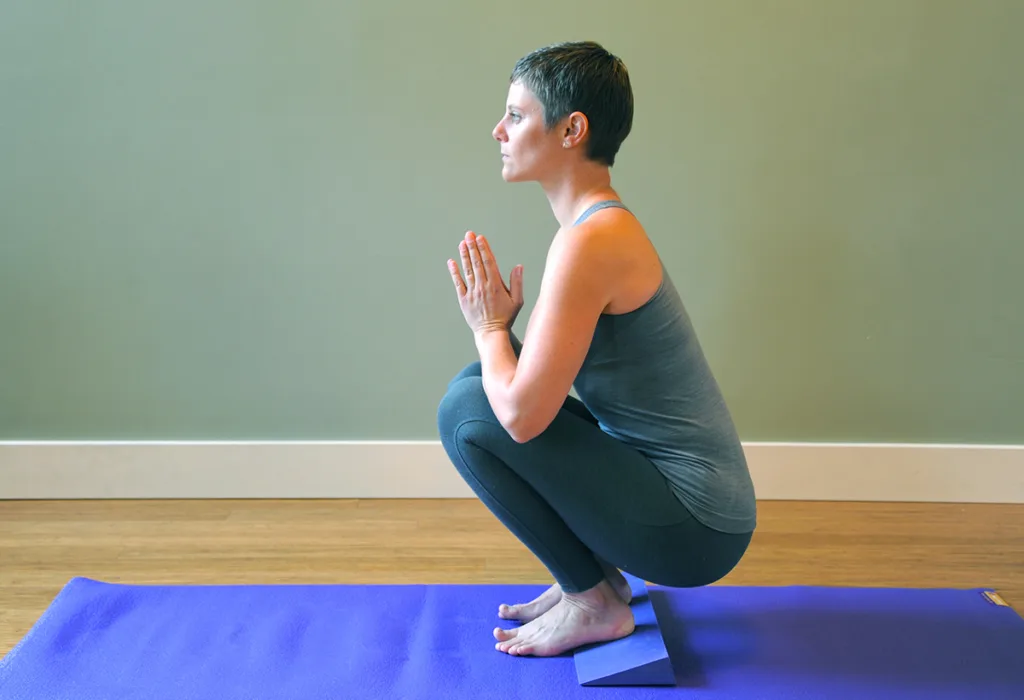
In India, where Yoga began, squatting is a go-to pose for many of life’s daily tasks. Before there were chairs, counters and tables, women squatted on the ground to prepare and cook meals. Some still do. Malasana (Squatting Pose) supports apana, the downward-flowing energy that governs elimination. Apana energy grounds agitation, making Malasana a great counterpose for stress. Malasana also relieves constipation. In addition, it stretches the ankles, groins and lower legs, and tones the abdomen and pelvic floor.
Some people don’t enjoy Malasana because their heels don’t reach the floor, making the pose feel unstable. This is because every person’s skeletal structure is different. Most of the time placing your heels on the ground in Malasana has little to do with soft tissue flexibility. It usually depends instead on the range of motion in your ankle joints. If your ankle joints don’t naturally flex much past 90 degrees—which is well within the parameters of normal range of motion—elevating them on a Foam or Cork Yoga Wedge will allow you to ground your heels and feel more stable.
To find out more about Malasana’s origins, benefits and practice, read this post.
How to Practice Malasana
- Gather your props: a Yoga Mat and Yoga Wedge.
- Start by squatting on a Yoga Mat with your feet hips-width apart and parallel. Let your heels descend toward the floor. If they don’t reach, place a wedge under your heels so that they are evenly grounded.
- Spread your heels, balls of your feet and your toes, grounding evenly across your feet.
- Widen your legs so that your torso fits snugly in between your thighs.
- Place your hands in Anjali Mudra (Prayer Position).
- Take five to ten deep breaths to settle into the pose.
- When you’re ready, you can leave the pose by straightening your legs into Uttanasana (Standing Forward Bend). Take a few breaths here and then lift up into Tadasana (Mountain Pose).
For more ideas on how to use a Yoga Wedge, visit our Yoga Props Guide.
